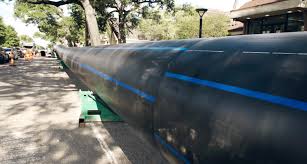Jul . 29, 2024 23:16 Back to list
Comparing PVC Pipe and PPR Pipe for Diverse Plumbing Applications and Performance Characteristics
PVC Pipe vs. PPR Pipe A Comprehensive Comparison
When it comes to plumbing and construction, the choice of piping materials can significantly affect the longevity, efficiency, and overall performance of a system. Among the various options available, PVC (Polyvinyl Chloride) and PPR (Polypropylene Random Copolymer) pipes stand out as two popular choices. Both materials have their unique properties, benefits, and potential drawbacks, making it essential for contractors, builders, and homeowners to understand their differences before making a decision.
Properties and Composition
PVC pipes are made from a synthetic plastic polymer known as polyvinyl chloride. This type of plastic is known for its rigidity and strength, making it an excellent choice for various applications, including drainage systems, irrigation, and cold water supply. PVC pipes typically have a smooth interior surface, which minimizes friction and reduces the risk of clogging.
On the other hand, PPR pipes are crafted from a thermoplastic polymer known as polypropylene. This material is characterized by its flexibility, resistance to cracking, and ability to withstand high temperatures. PPR pipes are often used in hot and cold water systems, as well as for heating applications due to their excellent thermal stability.
Applications
PVC pipes are widely used in plumbing and construction projects, primarily for drainage, sewage, and venting applications. Their low cost and ease of installation make them a popular choice for both residential and commercial projects. However, PVC is generally not recommended for high-temperature applications, as it can warp or degrade when exposed to heat.
PPR pipes, with their superior thermal properties, are an excellent choice for hot water applications. They are also used in HVAC systems and for transporting chemical fluids, thanks to their resistant nature. PPR's ability to handle high temperatures makes it a preferred material in many plumbing projects where hot water is frequently used.
Installation
pvc pipe vs ppr pipe product

One of the significant advantages of PVC pipes is their straightforward installation process. They can be easily cut, joined, and connected using solvent cement, which forms a strong, permanent bond. However, this method requires careful handling and adequate ventilation during the bonding process to ensure safety.
PPR pipes, conversely, utilize a welding technique for joining, which involves heating the pipe ends and fusing them together. This creates a seamless connection that enhances durability and reduces the risk of leakage. While the installation of PPR pipes may require specialized tools and skills, the end result is often worth the extra effort.
Cost
When it comes to cost, PVC pipes are typically less expensive than their PPR counterparts. This makes them an attractive option for budget-conscious projects. However, the long-term durability and resistance to wear and tear of PPR pipes can offset the initial investment, especially in systems where hot water and high pressure are involved.
Environmental Impact
Both PVC and PPR pipes have environmental considerations. While PVC is a widely used material, it poses some concerns regarding production and disposal due to the release of harmful chemicals. PPR, being a more environmentally friendly alternative, is often regarded as a safer option due to its lower toxicity during production and after disposal.
Conclusion
In conclusion, the choice between PVC and PPR pipes largely depends on the specific requirements of a plumbing or construction project. PVC pipes offer affordability and ease of installation, making them suitable for cold water and drainage applications. In contrast, PPR pipes excel in high-temperature environments and provide excellent durability, making them ideal for hot water and heating systems. Ultimately, understanding the characteristics, advantages, and limitations of each material will guide you in selecting the most appropriate piping solution for your needs.
-
High-Quality PVC Borehole Pipes Durable & Versatile Pipe Solutions
NewsJul.08,2025
-
High-Quality PVC Perforated Pipes for Efficient Drainage Leading Manufacturers & Factories
NewsJul.08,2025
-
High-Quality PVC Borehole Pipes Durable Pipe Solutions by Leading Manufacturer
NewsJul.08,2025
-
High-Quality PVC Borehole Pipes Reliable PVC Pipe Manufacturer Solutions
NewsJul.07,2025
-
High-Quality UPVC Drain Pipes Durable HDPE & Drain Pipe Solutions
NewsJul.07,2025
-
High-Quality Conduit Pipes & HDPE Conduit Fittings Manufacturer Reliable Factory Supply
NewsJul.06,2025

